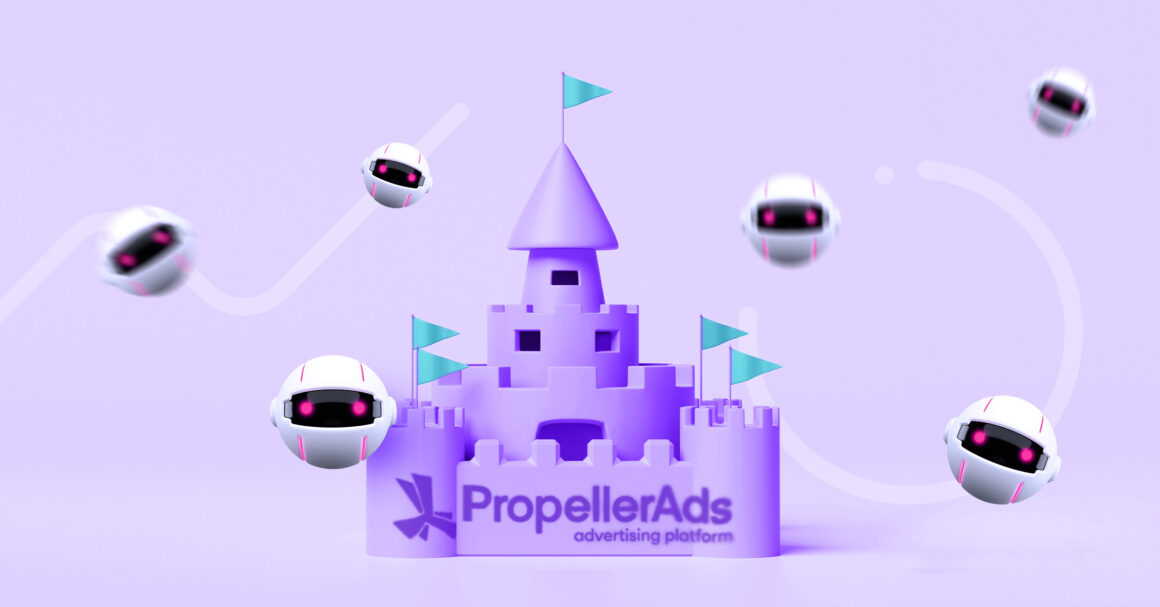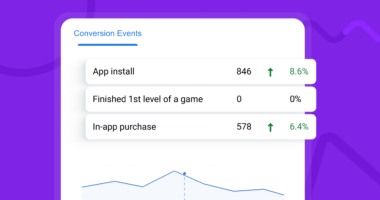Author: Olga Mikheeva
The ad fraud forecasts are not comforting at all. The statistics show that the losses advertisers suffer are growing exponentially yearly — and will reach 100 billion U.S. dollars worldwide. This is just one research — while there are many more, separated by different GEOs, fraud types, and industries.
The good news is that fraud-combating methods are developing as quickly as scam techniques. Moreover, finding high-quality traffic sources can significantly reduce the risks of becoming a bot or malware victim.
But what makes a source ‘high-quality’?
One of the significant points is having advanced anti-fraud solutions that can quickly detect and beat ‘bad’ traffic, leaving all impressions to exclusively real users at a fair price for a particular GEO and an offer type.
This is what is constantly done at PropellerAds with the help of their in-house algorithms, policy team, and partner ADEX — an advanced AI-based anti-fraud platform.
Today, we will share what fraud types PropellerAds team faces the most often — and how they fight them.
Read the article until the end and find out how to get exclusive PropellerAds promo code.
5 Popular Fraud Types Advertisers Face
PropellerAds team is constantly monitoring ad campaigns to protect clients from fraudsters — and quell all the attempts to fake clicks, impressions, and conversions. Here are the most common types of these attempts.
Bot Traffic
Bots are becoming a bigger and bigger pain for digital marketers. They were not so disturbing in the past, thanks to their primitive nature: it gave them away easily by creating heavy loads of strange traffic coming from a single IP.
However, things change, and so do bots. Now they perfectly mimic human behavior and — what is even more hurtful — attack with big armies coming from enormous botnets. And yes, they crawl ad landing pages and pre-landers from real user devices — simple trackers won’t guess the imposter is in!
Besides, modern ‘bad’ bots don’t just generate fake impressions. Here is how they can spoil the experience of even a perfect ad campaign:
- Create fake clicks. Pretty obviously, a very devastating fraud for Cost-Per-Click bidding model campaigns.
- Make fake conversions. CPA campaigns, where advertisers pay for conversions, are usually more expensive. And paying for, say, an app installed by bots or fake website registrations might become a disaster for ad budgets.
Clickjacking
A more sophisticated way to steal advertising budgets is called clickjacking. Yes, you got it right — it is literally ‘highjacking of clicks.’ How does it work?
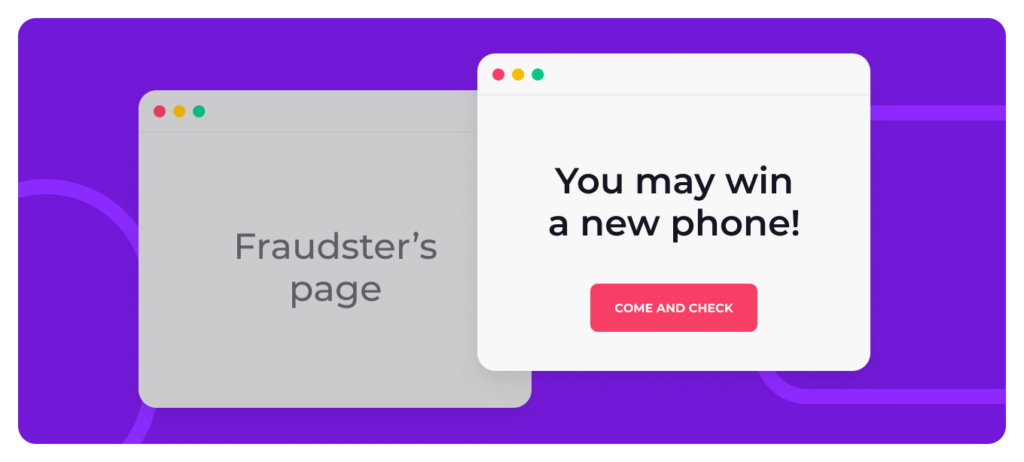
Here is the flow:
- An advertiser creates a campaign. His ads — let them be Interstitials, for example — start to appear on some publishers’ websites.
- A fraudster places a special script above the advertiser’s Interstitial. This script redirects every click to a fraudster’s URL address — preventing all clicks from reaching the advertiser’s landing page.
- An advertiser continues to pay for the clicks — they are 100% real clicks, coming from genuine users — but doesn’t get any conversions because no user reaches the right destination. As a result, the entire budget is flowing away to the fraudster’s pocket.
GEO Masking
Advertising costs vary depending on GEOs. Commonly, all GEOs are divided into three main tiers — with Tier 1 containing the wealthiest countries like the USA and Tier 3 consisting of the consumers with lower purchasing power.
What fraudsters learned to do is mask IP addresses and change the target location. So, an advertiser pays for impressions from, say, Australia, which is a Tier 1 country, while users from Tier 2 or 3 actually see their ads.
Ad Stacking
A marketer pays for every single click, impression, or conversion that comes from a single ad placement, right? Absolutely — unless some witty fraudster decides to show off their skills in ad stacking.
It works exactly as you imagine when you hear the word ‘stacking.’ Simply put, a fraudster takes a single placement and hides more ads — layer by layer — under the genuine ad. Users click the visible ad, located on the top layer — and these clicks are counted for all the other hidden ads.
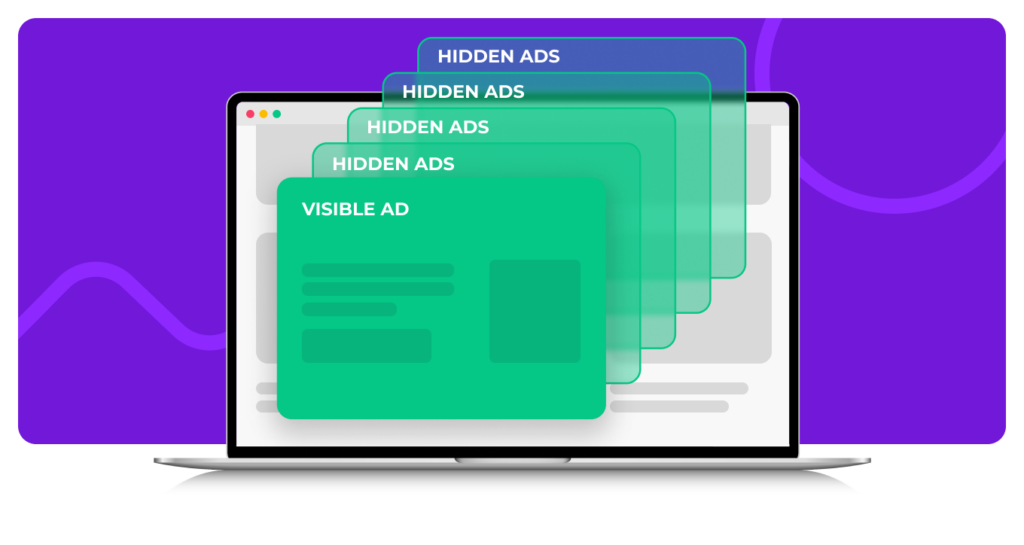
As a result, an advertiser pays for all the clicks — so, if ten ads are stacked below his original one, the ad spending grows tenfold.
Domain Spoofing
Another fraud technique involves misrepresenting well-known websites with expensive traffic for fake ones. In most cases, fraudsters create sites that look almost identical to the original ones, with a single misprint in the domain name.
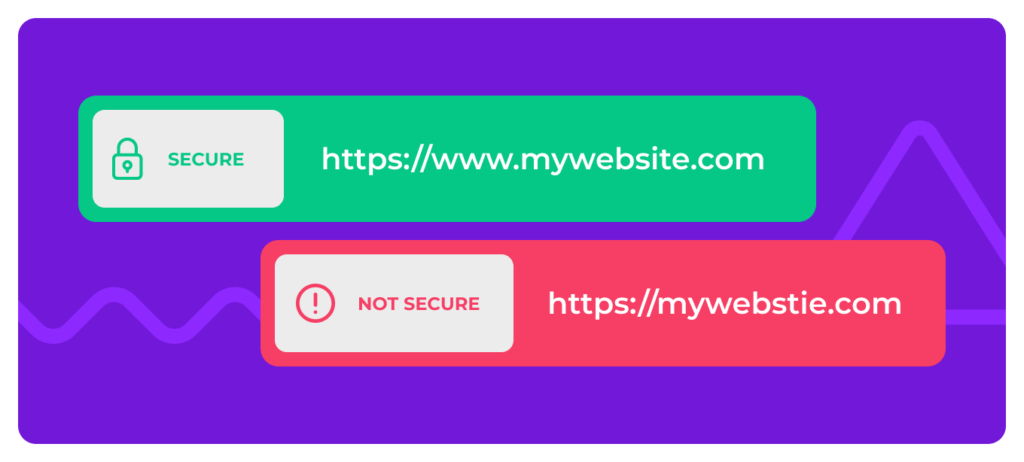
If media buyers are not attentive enough, they don’t notice the trick and display their ads on low-quality traffic websites. They don’t only pay as if they got premium users from trusted websites — but also don’t get any conversions and impressions from relevant audiences.
3 Popular Fraud Types Advertisers Do
Ad fraud is not limited by stolen advertisers’ budgets. Sometimes, media buyers and affiliate marketers break the rules in some forbidden ways, too — and PropellerAds also tracks it to stay away from any kind of unwanted content in their ecosystem.
So how can advertisers try to deceive a network?
Cloaking
According to PropellerAds partners’ ADEX research, cloaking is the most popular reason why they ban ad campaigns. What is it?
In a nutshell, cloaking implies hiding the destination URL of the ad. For example, PropellerAds prohibits adult content advertising — but some tricky marketers mask links to restricted websites so that engines take them for something innocent.
A spoiler: PropellerAds knows how to reveal this in a heartbeat 🙂
Multi-Accounting
PropellerAds’ rules don’t allow having more than a single account. This is not just a whim: the reason for such a limitation is that advertisers banned for fraud may create new accounts — to break the policies again, of course.
And, by the way, this is the second most popular reason why they ban accounts.
Breaking the Policy Rules
Finally, PropellerAds has a list of other restricted actions that lead to account suspension or campaign bans. Here is what you should avoid as an advertiser:
- Misleading ads
- Copyright break in ads
- Potential phishing
- Sexual content
- Prohibited products and malware
Here are statistics from their Policy Team — with the top popular reasons for accounts and campaigns ban:
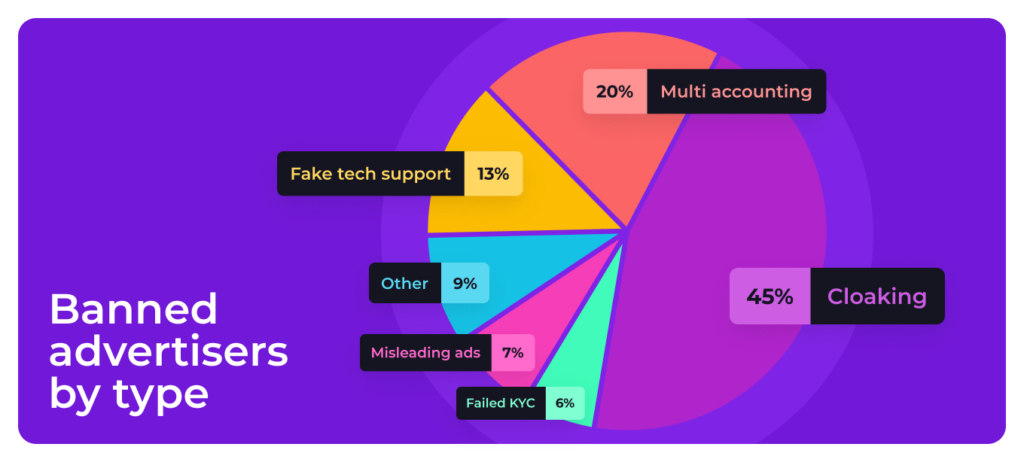
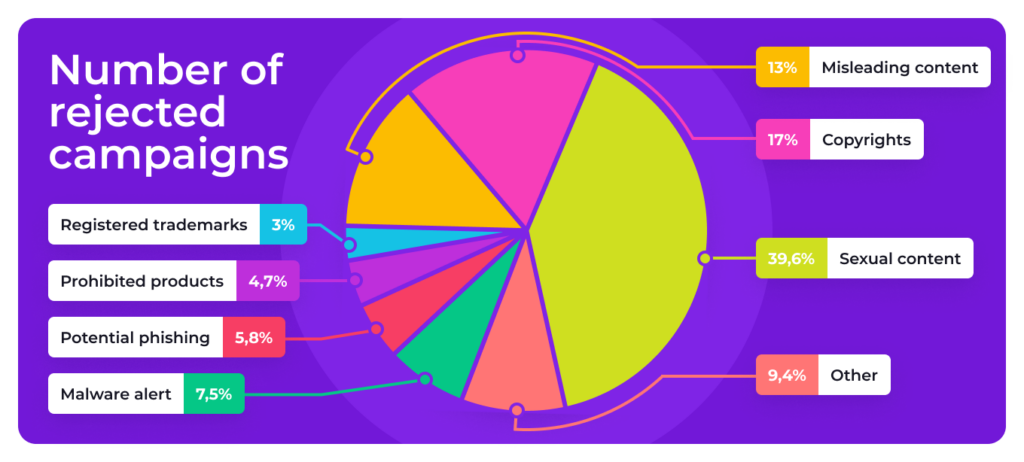
PropellerAds Against Ad Fraud: Triple Protection of Advertisers’ Traffic
As you guess, ad fraudsters of today use the best technologies — AI, machine learning, and programmatic techniques. And, as you also guessed, all these evolved fraudulent tricks are resistant to simple combating methods.
However, PropellerAds keeps its traffic away from unfair advertisers and fraudsters.
How is this possible? All credits go to PropellerAds’ Three Horsemen of the Fraudpocalypse:
| Policy team | Stays up 24/7 to manually check campaigns that might contain fraud |
| In-house software | Constantly monitors traffic for possible fraud signs |
| ADEX | A modern AI-based tool for detecting bots and fraud traffic and getting rid of it in real-time before it spoils a campaign |
Let’s now look at how they do it and what they exactly do in more detail.
Keeping an Eye on Partners’ Traffic
As a multisource network, PropellerAds — guess what — has multiple traffic sources! They come exclusively from reliable partners — but how do they know they are reliable?
Here is what PropelllerAds team does to check the inventory of suppliers:
- PropellerAds accepts only fully-functional supplies with bright and clear content created with the user in mind. No go for the platforms created for the sake of ad links!
- The same rejection will come for any false/unofficial information that might harm users — and adult websites as well.
To check this all, PropellerAds’ Policy Team strictly monitors ad content — and their technologies help recognize almost all known types of ad fraud at every source. They use various methods and patterns with many modern tools — but keep the details of the process secret, of course. They don’t want to give fraudsters any hints!
Besides, PropellerAds can go with a manual check — they do it when they need to ensure the quality of particular partners or when customers request them to do it for certain reasons.
Tracking, Detecting, and Getting Rid of Fraud Traffic
This is the job of PropellerAd’s in-house solutions and its reliable partner ADEX. This combo gives ultimate protection against fraud in the automated mode — but there are also manual checks available upon request. They do them when, for example, an advertiser needs to investigate a particular piece of traffic thoroughly.
Besides, PropellerAds’ partners can join ADEX as a third-party anti-fraud solution and enjoy extra features like immediate alerts or bot redirects.
Strict Control of Advertisers and Their Campaigns
Finally, PropellerAds takes much care of the campaigns they rotate in the network. This is what their Policy team does 24/7:
- Moderate new ad campaigns to ensure users don’t break PropellerAds’ rules and commit forbidden practices. Thanks to their methods, this thorough check takes only about 3 minutes for a single campaign.
- Moderate existing ad campaigns as well — so nobody has a chance to violate the rules after the first moderation.
- Monitor the ever-changing fraud techniques and update moderation rules accordingly.
How Voluum is fighting bot traffic
Note from PropellerAds: There are also third-party anti-fraud tools that may boost your protection level. For example, Voluum tracker offers a special Anti-Fraud Kit feature that helps to detect and get rid of bot traffic and fake clicks.
It consists of several tools, aimed at identifying different characteristics and addressing different problems caused by invalid traffic:
- Anti-Fraud Metrics which identify patterns of typical invalid traffic behavior i.e. abnormally fast or frequent clicks, poor referrer reputation, unrecognized user agent, and more. Studying the origin of traffic flagged with one or a couple of these metrics will let you identify a source of suspicious traffic. Then you can block it in your traffic source platform.
- Time-To-Convert Metrics which measure how fast a visitor triggers a conversion (app install or subscription). You can use this tool to detect unusually fast conversion times that may indicate a non-human origin.
- IP / UA Filtering which allows you to block unwanted traffic using IP addresses or ranges or user agent names. If you have identified an IP address, a range of IP addresses or specific User Agents that you suspect of generating invalid traffic, you can block them from ever coming to Voluum.
- Honeypot, a feature that generates an invisible link for your landing page that only bots can activate. Bots that have clicked this invisible link are still directed to an offer’s page, but they are also flagged and marked as suspicious.
If you want to read more about Voluum’s Anti-Fraud Kit, check out this article.
To Sum Up
As you see, fraud doesn’t seem like such a disaster when you have a reliable partner. PropellerAds team is constantly upgrading their tools to keep protecting their customers — and stay alert to save your traffic from any unwanted events.
PropellerAds prepared a special promo code for all the new users. To get follow this simple instruction:
- Reach out to the support team via [email protected]
- Add to your messenger a secret word “VOLUUM”
- Voilà, promo code is yours!
Welcome to the safe side of advertising — join PropellerAds today.

